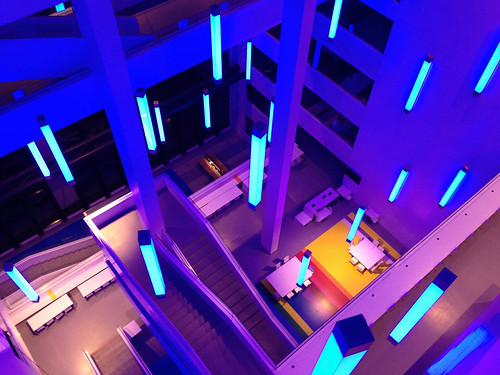F the 400 patients on whom records were readily available, luminal A comprised the majority of individuals at 39.five , luminal B 31.8 , TNBC 16.three , and HER2-enriched 12.5 . The median age on the cohort was 56 years along with the majority of sufferers, 277 (69.3 ) have been mixed race, and 83 (20.8 ) have been black. There was no substantial association between race and TNBC molecular subtype; however, there was a trend to an increase on the subtype inside the black race patients (18.1 ). Dr Simonds concluded that the incidence of TNBC in this cohort was comparable to these reported in international literature. Because of the little Caucasian population at the institution, it was not ATP-polyamine-biotin web probable to draw definitive comparative conclusions regarding race and incidence of high-risk molecular subtypes. Within the Free of charge Communication of Abstracts IV session, held on 23 November 2013, Dr Olufunmilayo Olopade presenting on behalf of Dr Dezheng Huo, both of your University of Chicago, on the topic titled: `Genome-Wide Association Studies of Breast Cancer in Women of African Ancestry Identifies Novel Susceptibility Variants’, stated that even though inside the previous five years, a variety of genome-wide association research (GWAS) had identified greater than 70 breast cancer susceptibility loci, most of the susceptibility single nucleotide polymorphismswww.ecancer.orgConference Reportecancer 2014, 8:(SNPs) have been discovered and validated in Caucasian females. The aim on the study was to identify more novel breast cancer susceptibility variants in girls of African descent, such as Nigerians, African Barbadians, and African Americans. A total of 1657 situations and 2029 controls were genotyped utilizing the Illumina HumanOmni2.5 array. In total, two,116,365 SNPs were genotyped and passed the substantial good quality control. From the 27 earlier GWAS-identified loci in women of European or Asian ancestry, only four loci (5p15.33TERT, rs10069690; 6q25.1ESR1C6orf97, rs9397435; 14q31.3GALC, rs4322600; and 16q12TOX3, rs3104793) were observed to become drastically related with breast cancer threat in women of African descent (p 0.05). Also, numerous novel loci for breast cancer, including 5q12.3, 5q15, 8q24.3, 9p22.3, 12p12.1, 13q31.1, and 14q24.2 (p 0.00001) had been identified. Additional research in women of African ancestry had been ongoing to validate these novel breast cancer susceptibility loci. In conclusion, Dr Olopade stated that the study highlighted the significance and necessity of conducting breast cancer genetic research in diverse populations. To reliably apply findings of genotype henotype associations based on popular low-penetrance alleles to PubMed ID:http://www.ncbi.nlm.nih.gov/pubmed/21338362 breast cancer danger prediction within the clinic, further replication, and validation of GWAS findings utilizing females of African ancestry are warranted.Breast cancer therapyAt the 23 November 2013 session on `Breast Cancer II: Concentrate on Oncology Therapy and Access to Care’, Dr Ahmed Elzawawy presented a paper around the changing trends in the management of breast cancer at the Suez Canal University, Alsoliman Center in Port Said, Egypt. A programme of totally free access to chemotherapy was commenced in the centre in 1984, while in 1994, radiotherapy became accessible at the centre through a  charity facility, the Alsoliman Radiotherapy Centre. The later has progressively enhanced to reach its current status. The centre offers comprehensive management free of charge of charge, for all citizens. Over the stated time period, the centre has witnessed a decline in presentation with sophisticated disease. The mean time from on.
charity facility, the Alsoliman Radiotherapy Centre. The later has progressively enhanced to reach its current status. The centre offers comprehensive management free of charge of charge, for all citizens. Over the stated time period, the centre has witnessed a decline in presentation with sophisticated disease. The mean time from on.
